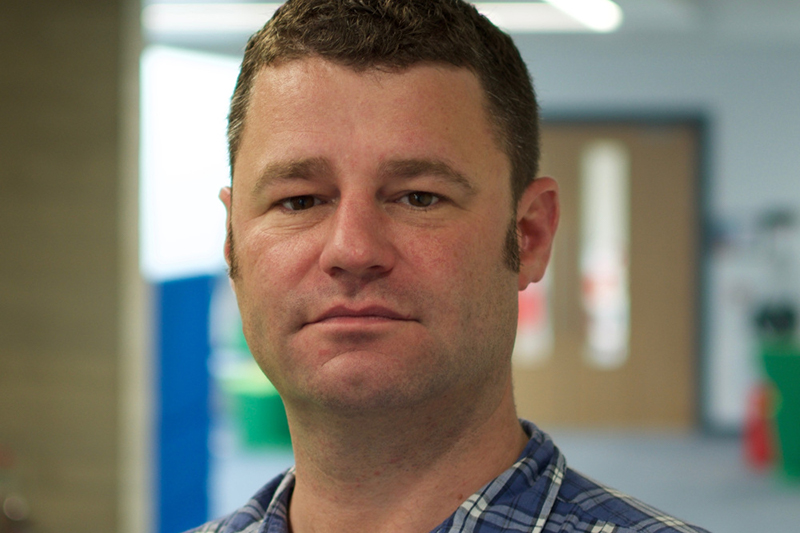By Charles A. Steward (PhD), Congenica.
Becoming a parent for the first time is an overwhelming mix of emotions. Exciting, frightening, exhausting, bewildering … “What will my daughter do for a career? Will she go to University? Will she get married and how many grandchildren will we have? Will she look after us in our old age…?” Many parents’ thoughts, I would imagine.
My daughter was born 10 weeks premature and after 1 month in intensive care she came home. Our first Christmas as a family was magical, but as March approached my wife and I could sense that something was not right with her.
My daughter spent much of her day screaming – not for food, but in a rage. She had stopped giggling and taking interest in her surroundings – she had regressed. Then, when she turned 8 months old, she started seizing, throwing out her arms and legs, her eyes would roll into the back of her head and she would cry after each attack. We videoed her and rushed her to Addenbrooke’s A&E in Cambridge, where she was diagnosed with a potentially fatal form of epilepsy called West syndrome. Medication stopped her seizures within 24 hours thankfully, but the brain damage had already been done.
Ex-Prime Minister David Cameron’s son, Ivan, tragically succumbed to a similar type of epilepsy, called Ohtahara syndrome. “Time will tell if your daughter will ever talk or walk”, we were told. “So she may never be able to call me daddy?”. A few months later we were given a further diagnosis of diplegic spastic cerebral palsy. Apparently, around 50% of children with West syndrome also present with cerebral palsy. My daughter will now need lifelong care and is at high risk of suffering from epilepsy again in later life.
We are now adapting our garage to be her ground floor bedroom and bathroom. Hoists will assist her to use her bed, bath and toilet when she is older and too heavy for us to lift. “Who will look after her if mummy and daddy are gone? Will her siblings have the same disease?” Furthermore, because she can’t walk, gravity has not intervened to help her form normal femur and hip bones, which means she will require major reconstructive surgery to prevent her hips dislocating.
We were surprised to find that, overall, relatively little is known about her disease. Cerebral palsy and epilepsy are umbrella terms for a group of diseases defined by similar symptoms, but with many different causes, prognostics and therapies. My daughter’s underlying cause is most likely to be genetic, so she was enrolled in the 100,000 Genomes Project.
Before moving to Congenica, I worked on the human genome for over 22 years at the Wellcome Trust Sanger Institute, a field that would lend itself perfectly to finding out more about her disease. I launched an international project to investigate genes involved in infantile epilepsy. Amazing open-minded clinicians in the UK and Canada offered their resources and time.
New disease causative genes are constantly being discovered, but we wondered whether existing gene structures had been completely catalogued, or whether there may be parts of those genes that are not represented in exome panels and genome browsers such as Ensembl and UCSC. My collaboration will support existing epilepsy projects to help identify the cause of disease, predict when future seizures may occur, identify therapeutic interventions when they become available and potentially reduce the need for further stressful and sometimes invasive procedures, with associated cost savings for the NHS.
I decided to move to Congenica because I wanted to work for a company that has a direct impact on children such as my daughter. In time, the work we do will help establish if a child has a de novo mutation, or not, meaning that recurrence risk is low, allow prenatal diagnosis for future children and tailor treatments, such as drug repurposing, based on a disease defined by a gene’s sequence. If an early diagnosis can be made for children at risk before the acute presentation of symptoms (which is a general predictor of poor outcomes), it might be possible to identify potential ways of reducing syndrome development. The anxiety of not knowing why my daughter is ill would be greatly reduced with a diagnosis, even if currently there is little therapeutic treatment.
And my daughter? As a direct result of the incredible medical intervention by the Addenbrooke’s clinicians, she has just celebrated her 4th birthday, can count to 10 in German and English and say, mama and daddy!

.png?width=320&height=192&name=Untitled%20design%20(8).png)
.png?width=320&height=192&name=Since%202016%2c%20the%20number%20of%20women%20working%20in%20STEM%20fields%20in%20the%20UK%20has%20increased%20by%20216%2c552%2c%20taking%20the%20total%20number%20over%20the%201%20million%20mark%20for%20the%20first%20time.%20Women%20now%20make%20up%2024%25%20of%20the%20STEM%20workforce%20i%20(2).png)
-1.png?width=320&height=192&name=Deciphering%20Developmental%20Disorders%20(1)-1.png)